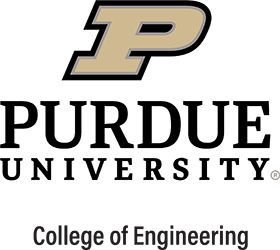Eyelid-Catching Smartphone Images Drive Research on "mHealth" Blood Scans
The use of smartphones for medical care as point-of-care diagnostics—in a field called mobile health, or "mHealth"-could expand to help cancer patients monitor their anemia thanks to research conducted by one of the latest Leslie Bottorff Fellowship recipients. Sang Mok Park, a Ph.D. candidate in Purdue's Weldon School of Biomedical Engineering through its partnership with Indiana University School of Medicine, envisions his work in data science and bioimaging technology yielding an ingeniously informative "app."

Armed with smart analysis, he says, a phone's built-in camera can provide virtual hyperspectral imaging (VHI) to estimate a patient’s hemoglobin count, which is an indicator of anemia. That condition, a shortfall in red blood cells carrying oxygen throughout the body, arises in approximately half of all cancer patients, sometimes due to chemotherapy or radiation treatments. How can anemia, whose symptoms include fatigue, dizziness, and irregular heartbeat, be monitored quickly and non-invasively, in homecare settings, or wherever clinical resources are not available? Park and his faculty mentor hypothesize that a special kind of "selfie," focused on lower eyelid membranes, can generate and send a spectroscopy report crucial to ongoing treatment.
Eyelid images can predict the hemoglobin content of blood, but this doctoral student, who earned his mechanical engineering master’s degree in South Korea, knows a wide range of research is needed to reach the goal. The Bottorff Fellowship will assist the first two of his planned five years of study on the Purdue campus and in Indianapolis hospitals. Park will work primarily with Young Kim, Ph.D., his faculty mentor and bioimaging expert at the Weldon School. Kim’s inquiry into anemia monitoring receives funding from the National Institutes of Health. He has tasked Park to refine the VHI algorithm that will use images to predict a hemoglobin count. First steps include the collection of abundant data that can be correlated with imagery details to inform future assessments.
"We need clinical studies to get measures from patients with different health conditions, different CBC [complete blood count] test results, and more," Park says. He travels weekly to the Indiana University Simon Cancer Center, where gathering blood statistics exposes him to lots of learning—such as protocols for conversing with patients about their cancer management and unique features of the United States health-care sector. Visits such as these, with travel costs covered by the fellowship, connect him to designated collaborators from IU School of Medicine—hematology/oncology specialist Attaya Suvannasankha, M.D., and clinical laboratory physician Raymond Konger, M.D.
After the data correlations and analytical algorithm take shape in Park’s first year, he will focus on applying those insights to a smartphone app. This, too, raises many questions, such as compatibility with different kinds of smartphones and cameras having their own image qualities and resolutions, he points out. It's anticipated that smartphones will need no special attachments to perform this anemia measurement function.
Its usefulness could go beyond cancer patients, considering there are various kinds of anemia with different causes. And, in the spirit of mHealth, anticipated impacts from user-friendly combinations of data science, advanced bioimaging, and digital technology go beyond exclusively "clinical:" translation. They reach into households and international populations with limited access to sophisticated medical facilities. Remotely captured digital measurements could become widespread replacements for conventional blood tests. Given all these factors, Park says he is confident his years in the interdisciplinary Ph.D. program will be well-spent.
"I think I have the proper project for my dream," he says, recalling that his aspirations as a mechanical engineer shifted toward biomedical research only a few years ago, based partly on conferences he attended in South Korea. The shift led him to explore many academic paths. He discovered Young Kim’s pioneering work in imaging at Purdue, along with access to Indiana University’s world-class medical resources.
Early days in Indiana are too soon to design a whole career, but Park says he is attracted by the technology's global reach. He received his first clinical experience this summer when he pursued two months of university-based research in Kenya. This intensified his interest in developing countries with resource-limited settings for efficient and precise diagnosis. "There are many opportunities to do some good things for them to have a better life."


